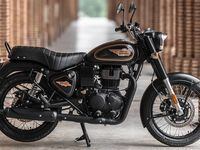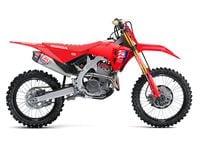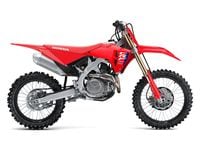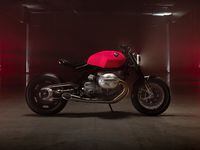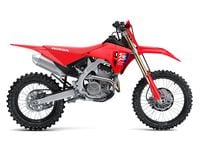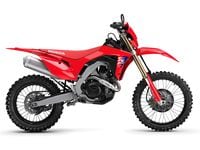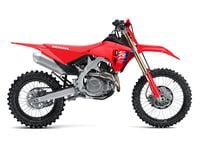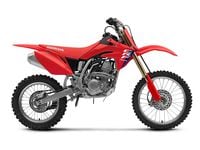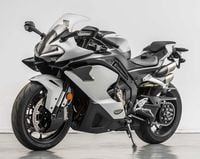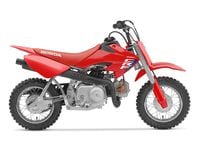A dashing figure at my college somehow ran a sound recording empire from his dorm room, effortlessly popping out audio innovations like sweepable EQ. With cash-flow like the tides he walked into Andrews Indian, our local Triumph dealer, and laid out green for a 650 Bonneville with special sprockets giving 60-mph at 3000-rpm. A Denver Triumph mechanic ran 12-to-one pistons for night match racing, fueled only from a tucked-away drum of purple av-gas. That was 1963. You didn't let the sun see your custom bike with any defect. A good customer came in with his non-stock chromed oil tank leaking. The boss looked at it and said, "Get this over to Bob's and have it stripped. I'll weld it and you get it back to be re-chromed. Today."
US motorcycle sales puffed up nicely with the post-WW II availability of light, maneuverable, and fast-accelerating British parallel twins like the Triumph 500. The never-ending American thirst for power triggered growth from the 500’s 63 x 80-mm = 498.8-cc to 71 x 82 = 649.3-cc as the Thunderbird of 1949. This jumped power from the 500’s 25.5-hp @ 6000 to 34 at 6300. Constant power increases kept sales healthy – changes like increased compression (boosts torque across the band, altered cams (mid-range, peak), and increased intake flow (peak). By 1956 the heat from all this new power required a cooler-running aluminum head, followed by separate intake ports, soon allowing the twin splayed carburetors of the T120 Bonneville of 1959.
We can admire the engineers at Honda who for 1969 adapted cost-cutting automotive design elements to make a four-cylinder motorcycle – the CB750 – affordable to a mass market. Up to the time of its shock appearance, it was believed that features like four cylinders and valve operation by overhead cam were only for cost-no-object factory racers.
Those men were not the first to simplify production techniques to bring advanced features to market. It was Edward Turner at Triumph who broke with the orthodoxy of single-cylinder engines with all-rolling-bearing cranks that had persisted since earliest days. He found a way to bring twins to British riders at realistic prices.
The specific novelties of Turner’s 1937 500-cc Triumph Speed Twin were these;
1) Two cylinders, which by halving the big thumps of traditional 500 singles made riding smoother and less tiring. Because two small pistons need less flywheel than one big one, acceleration was less slowed by flywheel mass.
2) Light forged aluminum connecting-rods that reduced vibration, and whose soft metal running directly on the crankpins eliminated the traditional and skill-intensive 5-piece roller crank assembly.
3) An engine design narrow enough to fit straight into the company’s existing single-cylinder chassis, thereby saving the cost of dedicated frames.
Any competent engineer of that time could have designed a twin capable of equal or better performance, but Turner’s achievement was to do it with production cost low enough to earn money in those depression times. The Speed Twin was a bold gamble.
In retrospect we can criticize Turner’s omission of a center main bearing, but his two bearing design solved the problem of where to put the flywheel; he put it in the center, with right and left crank forgings bolting to it. That allowed the crankcase to assume a spherical shape, giving corner clearance as good as that of a single. At the 6000 peak rpm of the original 500, two bearings worked fine.
The basic rightness of this design for the market was proved by the speed with which competitors copied its basic features the moment WW II ended. BSA, AJS/Matchless, Norton, and Royal Enfield all produced similar parallel twins, which today bear the collective name “British twins”. Only AJS/Matchless tried something different – a center crank main bearing that was not a 100% success (I have on file somewhere Jack Williams’s procedure for correctly centering the bolt-in web that carried that center bearing).
Turner had been a regular at Brooklands Speedway, which was where you went to hear all the latest gossip from the automotive, aircraft, or motorcycle worlds (at one point in the 1920s British motorcycle registrations outnumbered those for cars!). One of the people he surely encountered was W.C. Devereux, who had made a business of forging high-strength parts from aluminum alloys. Even before that, aero designer Frank Halford (who with Harry Ricardo developed the Triumph-Ricardo racing single) had shown the durability of forged aluminum pistons and rods in a special 1.5-liter racing car of 1923. Turner saw a way to bypass the cost and assembly time of traditional 5-piece cranks, with their need to be bumped into .001” alignment by skilled (i.e. more expensive) personnel.
In 1955, Triumph adopted replaceable-shell big-end bearings, ending the practice of running the aluminum rods directly on the crankpins.
At our little Triumph/Kawasaki shop in Arlington, MA we’d see a familiar scene, over and over. Three young men would enter the showroom and walk over to a bike. After a time, one of the older pair would say to the novice (for that’s what he clearly was), “Go ahead. Sit on it.” He’d get on and look around sheepishly. They’d talk. Finally the lad on the bike would adjust the mirrors, grin, and nod enthusiastically. Finally they’d walk over to the counter, where the buyer would begin to lay out cash. Ceremony complete.
Those young men were not so happy when Triumph messed with success. Looking at the “megamufflers” on early ‘70s models, they’d say, “Can I, you know, still get the… old pipes?”
“You mean the sausage mufflers?”
“Yeah! Kin I still get those?”
Sorry, no, and they didn’t like the aluminum “fork bottles” either, and wanted to know if they could still get the black-painted steel ones. The right ones. Did they like the tall new oil-in-frame models, for long-legged riders only? Did they like the 5-speed transmissions that crunched?
We don’t know why, but business planners sometimes find ways to burn down their brand and kill their market. Did they read the wrong trendy business book? Were they stupid? Or did they just run out of money?
Never mind – what we value and remember was those great bikes, idling, their front wheels shaking forward-and-back in that unforgettable way. Lots of miles and lots of non-scheduled peak experiences.
/cloudfront-us-east-1.images.arcpublishing.com/octane/TXPRPG55IRAE7IWZWJ7FGUBYEU.jpg)
/cloudfront-us-east-1.images.arcpublishing.com/octane/UZZ54MQS45BIPO7FDUKWJU2NGQ.jpg)
/cloudfront-us-east-1.images.arcpublishing.com/octane/ML3B54HGQRGMFKYTKRTBW2PRZM.jpg)
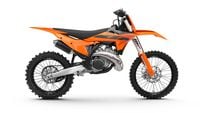
/cloudfront-us-east-1.images.arcpublishing.com/octane/N575KB7BDZDPPJBRLZRG2ANHKI.jpg)
/cloudfront-us-east-1.images.arcpublishing.com/octane/T77HXRXV4NGKDNZODMSEIBRXPE.jpg)
/cloudfront-us-east-1.images.arcpublishing.com/octane/NKMM7V2P3BCSXAV6J56FKK67OU.jpg)
/cloudfront-us-east-1.images.arcpublishing.com/octane/SWQRQV27DNFA7LXGFI7FNFNGOQ.jpg)
/cloudfront-us-east-1.images.arcpublishing.com/octane/GYEXUJBV5JGQLLZNXO7KRVSTEY.jpg)
/cloudfront-us-east-1.images.arcpublishing.com/octane/MCWUSJJVJVG45P7QQG3WOXZR54.jpg)
/cloudfront-us-east-1.images.arcpublishing.com/octane/AJ4EFPH2CRDURDAB5LPEA2V2NE.jpg)
/cloudfront-us-east-1.images.arcpublishing.com/octane/LSDHIL22SZAFFPYLKP5ZXLJSIY.jpg)
/cloudfront-us-east-1.images.arcpublishing.com/octane/SH46HIOX4RELXLXF6AE3SFGH4A.jpg)
/cloudfront-us-east-1.images.arcpublishing.com/octane/JUZ52WFWLJGMNH7PGZNOKP3MUY.jpg)
